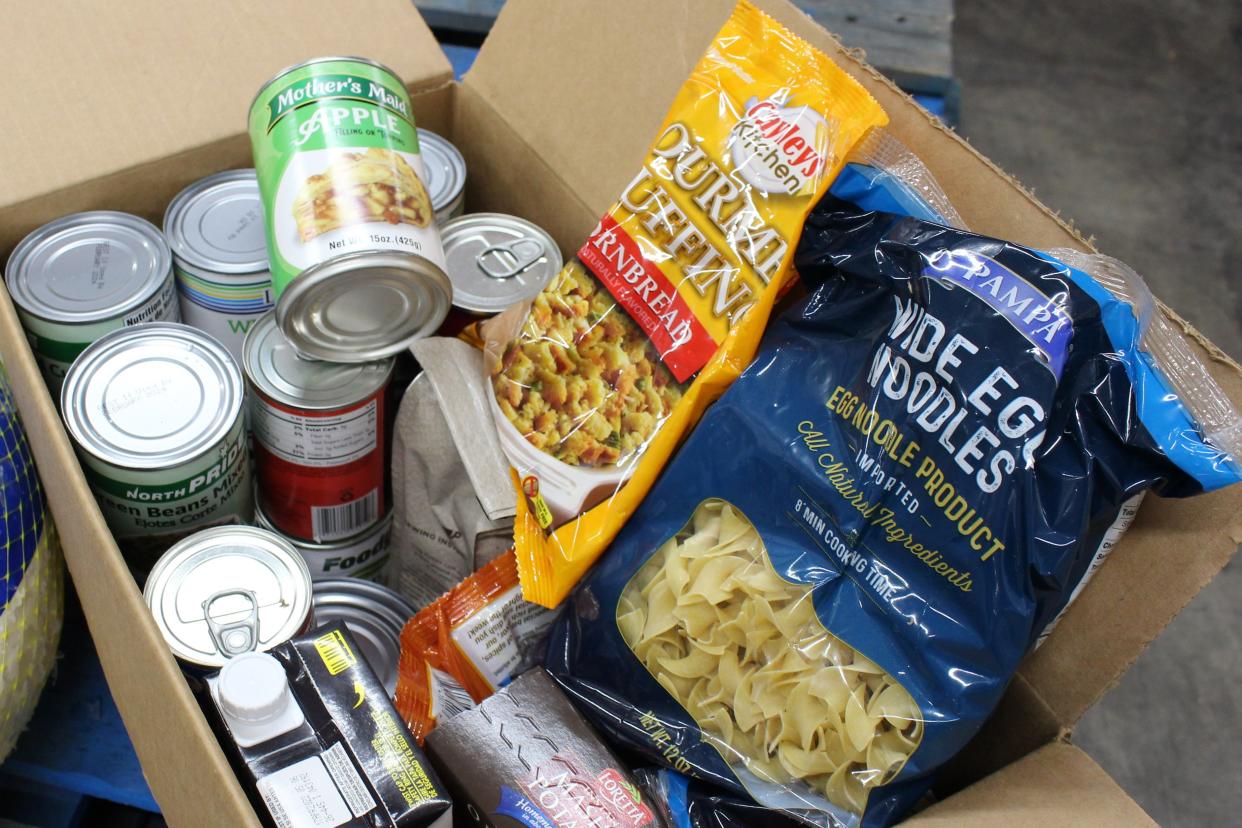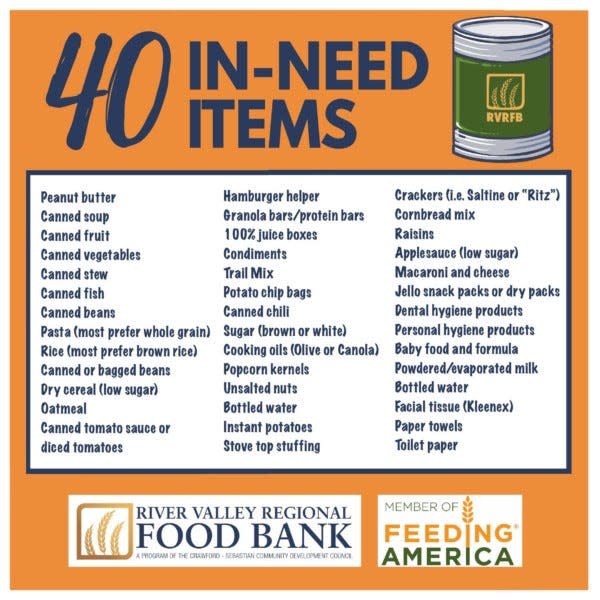Battling food insecurity in the River Valley

With much of the holiday season centered around food, the impact of hunger in our communities becomes even more apparent.
More than 16% of people living in Sebastian County experienced poverty in 2019, according to U.S. Census American Community Survey. Feeding America, the largest domestic hunger-relief organization, estimates 1 in 8 people may be experiencing hunger across the nation in 2021 due to food insecurity increasing during the pandemic.
To help your community, here’s a five-step guide to creating a food drive.
Learn what's needed
Before gathering canned goods or setting out a collection box, contact your local food bank or food pantry to see what the need is.
The River Valley Regional Food Bank has a list of 40 in-need items on its website, www.rvrfoodbank.org.
“They usually do the staples in a food drive ... could be like any kind of canned good, canned vegetable, cereal, oatmeal, canned meat, sugar, flour, peanut butter, you know, the basics,” said Tracy Engel, director of the food bank.
“Anything that can last on your shelf for a long time that families can eat in bulk or whatever they can make multiple meals out of,” said Justin Bates, marketing and development director.

Those interested in starting a food drive to benefit the food bank should contact Bates or DeLandy Russell, agency relations and USDA coordinator, at 479-785-0582. Bates can help create flyers and provide collection boxes.
Make sure what you plan to donate can be used by the food bank or food pantry. Even though donors may have good intentions, the River Valley Regional Food Bank is unable to accept homemade goods, fresh produce or items like deer meat that do not have a USDA label on it.
In the past, some individuals have left items like a bag of fresh produce outside the food bank doors.
“We can’t use it because we don’t know what’s happened to that produce before we got here. We always try to be vigilant about that,” Engel said. “We’ve had people clean out their cabinets and bring us their spices and things. If it’s been opened, we can’t use it. It has to be new and in an unopened condition from the store.”
“Just make sure the integrity of the food you’re collecting, that it’s not compromised,” Bates said.
Build a team and set a goal
Whether it’s with your coworkers, book club or religious group, running a food drive is easier with a team.
Decide on a goal and what kinds of foods you hope to collect. Also, set dates for how long you would like your food drive to last.
Pick a location, get the word out
With your group, choose a location for your collection boxes and then get the word out. Bates said he has seen flyers, social media and word-of-mouth all contribute to a successful food drive.
“If we know that they are doing a food drive, and they’re going to be posting about it on their social media, I will share it on our social media,” he said.
Bring donations to the food bank
After your food drive is over, contact the food bank to set up a time to drop off the items at 1617 South Zero St. in Fort Smith. If there is an abundance of donations, “we’re more than happy to pick it up,” Engel said.
Find other ways to fight hunger
Beyond conducting a food drive, commit to educating yourself on the impact of hunger and use your creativity to find new ideas to contribute to local nonprofits.
If your heart is set on homemade goods like baked items, you can host a bake sale and donate the proceeds to the food bank.
Other ideas include creating a fundraising competition between your coworkers or schools.
Also, consider taking part in Hunger Action Month during September next year. Hunger Action Month is when Feeding America network food banks, food pantries and community members work together to address food insecurity across the nation.
By giving back this holiday season, you can not only provide food for those in need but also plant a seed that inspires generosity in your community.
This article originally appeared on Fort Smith Times Record: Your 5-step guide to creating a food drive to help your community

